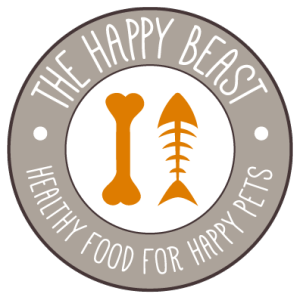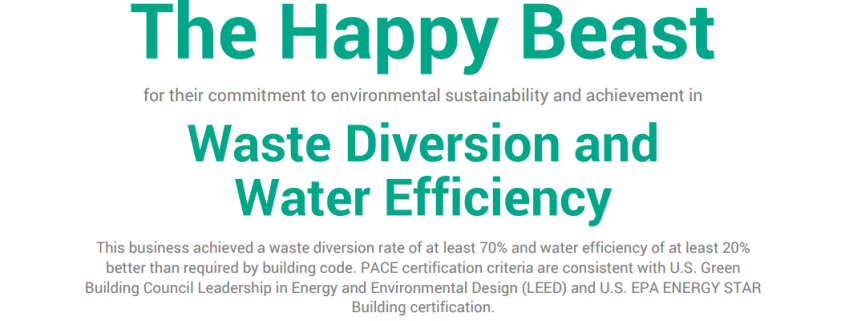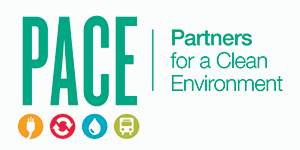Earlier this month, The Happy Beast received sustainability certification in waste, water and energy efficiency through Partners for a Clean Environment (PACE). In partnering with PACE, we’re joining a community of businesses that:
- Are dedicated to the community in which we live
- Care about our customers
- Pursue more sustainable practices to support the health, environment, and economy of our local community.
Our PACE certification in waste diversion and water efficiency demonstrates our high level of environmental performance. PACE’s certification performance criteria are based upon and consistent with Leadership in Energy and Environmental Design (LEED) criteria as well as EnergyStar Building certification. To achieve certification, we demonstrated:
- Waste Certification: Diversion of at least 70 percent of waste stream away from the landfill. (Our diversion rate is 87%!)
- Water Certification: Water savings of 20 percent better than usage predicted by current code. (Our savings is 21%!)
We’re making some great strides in sustainability certification and will continue these efforts throughout 2015 and 2016. You can read our Part 1 blog post to see where we started, or check out our progress-to-date below.
The Happy Beast: Steps to PACE Certification
(Audit conducted: May 15, 2015 | Last updated: September 15, 2015)
- Water: CERTIFIED (Gold)
- Install low-flow faucet and dog wash sprayers: COMPLETE
- Install additional drain screens for dog washes: COMPLETE
- Install water efficient toilet: COMPLETE
- Install dual-flush toilet conversion kit: Pending
- Energy: CERTIFIED (Silver)
- Update thermostat programming: COMPLETE
- Use smart power outlet strips: COMPLETE
- Use sleep mode for all computers: COMPLETE
- Install Energy Star certified washer and dryer: COMPLETE
- Upgrade all remaining lighting to LEDs: COMPLETE
- Install occupancy sensors in bathrooms: Pending
- Upgrade to energy-efficient water heater: Pending
- Waste: CERTIFIED (Gold)
- Establish composting and recycling, including packaging film plastics: COMPLETE
- Provide reusable shopping bags and $.10 bag credits (stop by the store to get yours!): COMPLETE
- Divert over 70% of monthly waste stream (recycling, compost, plastics, and trash): COMPLETE


